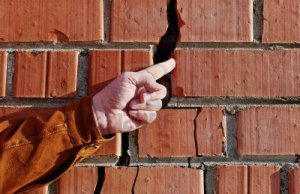Perennialism reminds me of a strong cemented brick wall. Brick walls exist because they are known to be strong and they intend to last forever. Walls are also built to protect, to keep a place safe, and because of this, walls also exist to preserve memories of historical events. Walls then are visited by people all over the world from time to time to witness a piece of history, to learn more, specially from the key events that are reflected in those walls. The Great Books in perennialism are somewhat like the walls. They both protect the truths and ideals of people and serve as an account of the knowledge that they would like to pass on and stand the test of time. Students then can serve as recipients of the knowledge, but at the same time gain the responsibility to use their knowledge to learn more.
By teaching the classics, perennialism tries to lay down what it believes to be the bricks which need to be placed on top of each other in order to build a strong foundation of knowledge that will equip the students in order to harness their potentials. By knowing what they have to know and building the wall that they need so that they will be able to delve into various schools of thought with the basic skills that they have strongly mastered from learning the general content, students can then be able to fulfil their nature and learn to realize their potentials.
I think that perennialism is a very idealistic educational theory because it seeks to strengthen the student’s intellect and knowledge and at the same time develop the general skill set that they need which they get from the classics. It is also very religious. It speaks of lasting truths and being able to read great works in order to know what they have to know and be able to develop a certain kind of discipline in learning. I think that the current educational system that followed by the Philippines somewhat reflected this as well. General knowledge was taught and given much emphasis as compared to specialised skills, but time is changing and the system of education is changing as well. The needs of the current generations are becoming different, and it seems like specialised education, vocational courses are being developed more because of the lack of resources. If this is happening today, then how perennial can we still call the schools of today?
If we require the students of today to still read the great books using their iPads, will that make them more interested in knowing about them? Will they still really read the books, or will they just search for the summaries online? I think that the challenge of applying the perennialist style to today is to be able to adapt to what the students are currently used to as well. Yes, there is much to learn from books like those in the list, but it is a great challenge for teachers to be able to integrate that to something that the students really care for, to something that makes so much sense to the students so that he/she will not feel like reading those will be useless. With this, I feel that perennialism is a really good educational theory, but it needs to also evolve without losing its touch to the today’s and tomorrow’s generations. Perhaps walls are still important, but they should not only block us from what we can learn and explore.
They should remind us of the strength that each brick possesses and allow us to learn from the bricks at the lowest part to those at the top so that we can know enough to be able to stand at the top and see both sides. Maybe that’s the ideal journey of a student– going through a wall one brick at a time in order to be able to see through its cracks and peep into wider horizons.








Hello Margaux!
I love how you used walls as an analogy. I also like how you pointed out that walls, although they protect and provide shelter, they can also keep and imprison. There was a line in the movie Shawshank Redemption, where the prisoners, after being “institutional-ized”, no longer know how to live outside the walls. A constant concern that I have with this theory is, are the schools that we are running helping them achieve their goals or are creating walls for them?
Nice entry! Looking forward to the next!